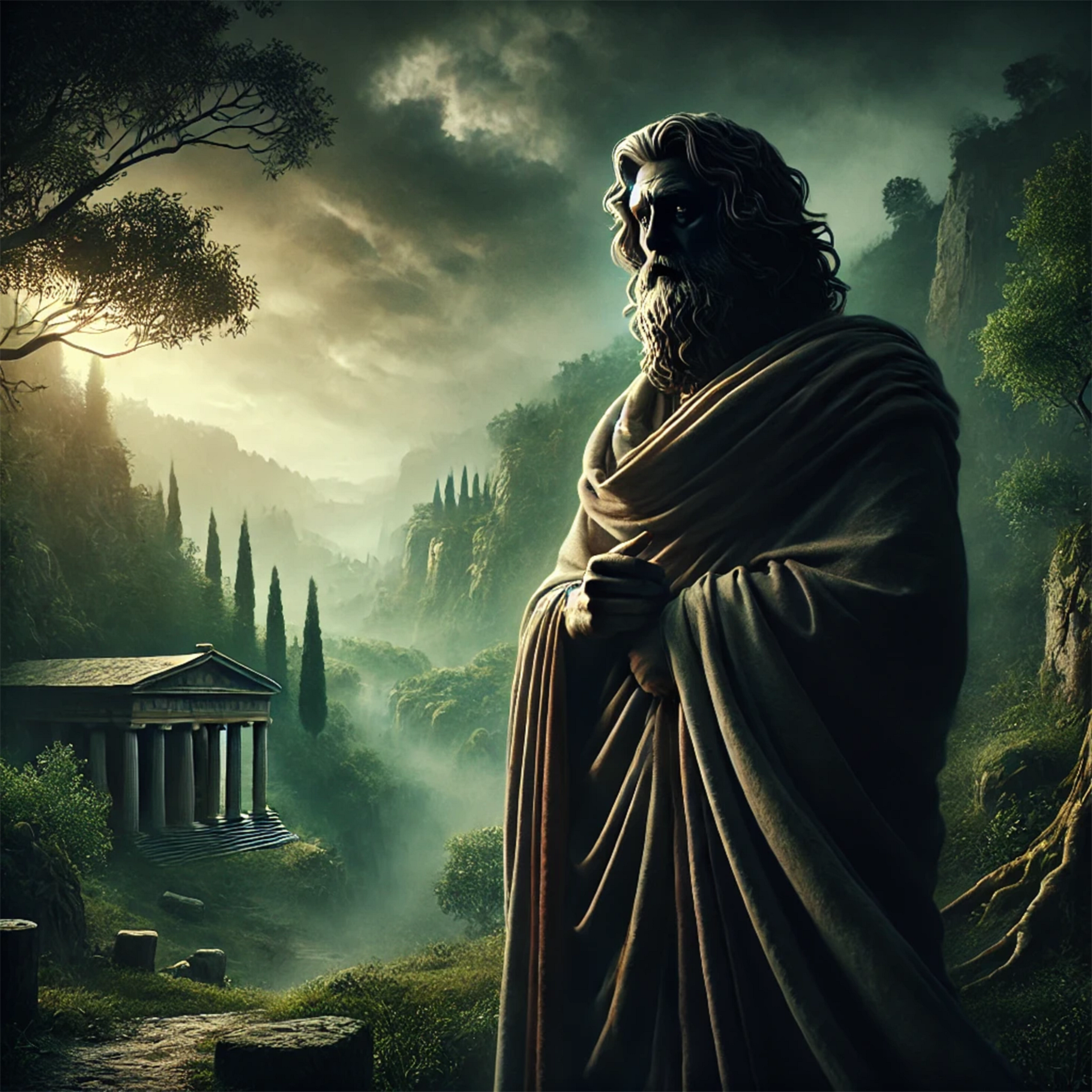Myth of the Day: Zalmoxis
An ancient Thracian deity embodies wisdom and benevolence, promising eternal life through mystical resurrection and divine guidance.
Region/Culture: Romania, Central and Eastern Europe
Mythos: Romanian Mythology
Primary Type/Nature: Gods and Deities
Mythical Attributes: Zalmoxis is known as a divine being who promises immortality to his followers.
Role in Mythos: Originally a human, possibly a slave of Pythagoras, who became a deity worshipped by the Getae, teaching them about immortality and rebirth.
Relation to Humans: Zalmoxis was revered by his followers who believed in their eventual reunion with him in the afterlife, ensuring them immortality. His teachings deeply influenced the spiritual and cultural practices of the Getae, blending philosophical doctrines with local religious beliefs.
Once, along the restless banks of the lower Danube, in a land lashed by winds and haunted by the shadows of deep forests, there lived a man—or a god—named Zalmoxis. Ask the Getae, and they will tell you he was their greatest secret, the immortal who taught them not to fear death. Ask the Greeks, and they will roll their eyes, claiming he once scrubbed floors for Pythagoras before vanishing into legend. But legends are stubborn things, and Zalmoxis is a legend with roots deeper than memory.
Zalmoxis emerges from the mists of Thrace clothed, so they say, in a bearskin at birth. The rough pelt clung to him not only as a garment, but as a mark: a creature half-claimed by wildness, half by wisdom. Those who insist he was once a man remember him as striking, imposing—a philosopher’s brow above wild eyes, hair as tangled as the Carpathians, a voice carrying the calm certainty of someone who has already survived death. Whether he was a king, a sage, or something stranger depends on who is telling the tale. Some said he walked among his people as a healer, others called him a priest, and a few whispered that the earth itself yielded secrets to him.
No one quite agrees on Zalmoxis’s origin. Herodotus, the great collector of tales, thought Zalmoxis had been a slave in Greece, gathering knowledge the way others gather debts, before returning home to his people. There, among the austere and honest Getae, he shared what he had learned: that death was not an ending but a passage, and the world spun on a pattern far larger than any mortal could see. He built a great hall, invited his countrymen to a banquet, and taught them that after this world came another—a realm of endless happiness, if only they dared believe.
But words alone are seldom enough. Zalmoxis proved his doctrine by vanishing. He retreated into an underground chamber—some say a tomb, some a temple, some a philosopher’s burrow—and for three years was as absent as the summer sun in winter. The people mourned, believing him gone forever, until he emerged, as hale as ever, insisting he had been journeying beyond the veil. For those who doubted, his return was proof: Zalmoxis did not lie. Death could be defeated.
The Getae, armed with their new faith, became notorious for their boldness. They believed themselves immortal, convinced that to die was merely to join Zalmoxis in a better world. Every four years, they held a grim lottery. A messenger—sometimes honored, sometimes unfortunate—was chosen, flung high onto spear points so he might swiftly reach the god and deliver the tribe’s requests. Should he die at once, it was a good omen. Should he survive, he was blamed for the failure and replaced. It was an arrangement that made both the Greeks and the sky itself uneasy. When thunder roared, the Getae shot arrows into the clouds, daring any rival god to dispute their faith.
Others—scholars, travelers, priests—speculated endlessly about Zalmoxis. Plato claimed he was a healer of souls, blending incantations with medicines, insisting the body and spirit were a single knot to be unpicked together. The priest Deceneus, who came after, taught the Getae strict ways: abstain from wine, study the stars, honor Zalmoxis above all others. In time, some thought Zalmoxis a sky god, others called him a lord of the earth, and some named him a master of mysteries, a bridge between the living and the dead. His very name grew tangled—Zalmoxis, Salmoxis, Zamolxis, Gebeleizis—like roots winding through soil.
Powers and weaknesses? That’s where the myth grows slippery. Zalmoxis promises his followers immortality of the soul, a secret path to joy beyond the grave. He commands the respect of the earth and perhaps even the skies, holding sway over thunder, healing, and the ordering of laws. To the Getae, he is a guide, a guardian, a judge of spirits. To outsiders, he is a magician who slipped through death’s fingers, or a clever prophet who knew how to stage a miracle.
But there are limits even for gods born in bearskin. His greatest strength—faith—is also a kind of frailty. Zalmoxis’s power lives and dies on belief: if his people forget, or if their courage falters, so too does his promise. The rituals that honor him are sharp-edged, sometimes fatal, and the boundary between devotion and cruelty is thin as a spear point. If Zalmoxis is ever truly vulnerable, it is to the gnawing doubt that creeps into all mortal hearts—the suspicion that perhaps, in the end, even the boldest legends are only stories told to keep the darkness at bay.
And yet, his story endures: the god who went underground and returned, promising that beyond every ending lies a new beginning—if only you have the nerve to believe.
Suggested Further Reading
Modern Fables inspired by Romanian Folklore by Ana Alexandra Moldoveanu
The Girl Who Would Be King and Other Romanian Fairy Tales by Petre Ispirescu
If you enjoy our content, please consider making a donation to support the people of Ukraine. Click here to visit the official Ukrainian donation website.
Explore more myths and wonders by visiting godsandmonsters.info.
Enjoy mythic tales on the move with our podcast, Five Minute Mythology.





Great!